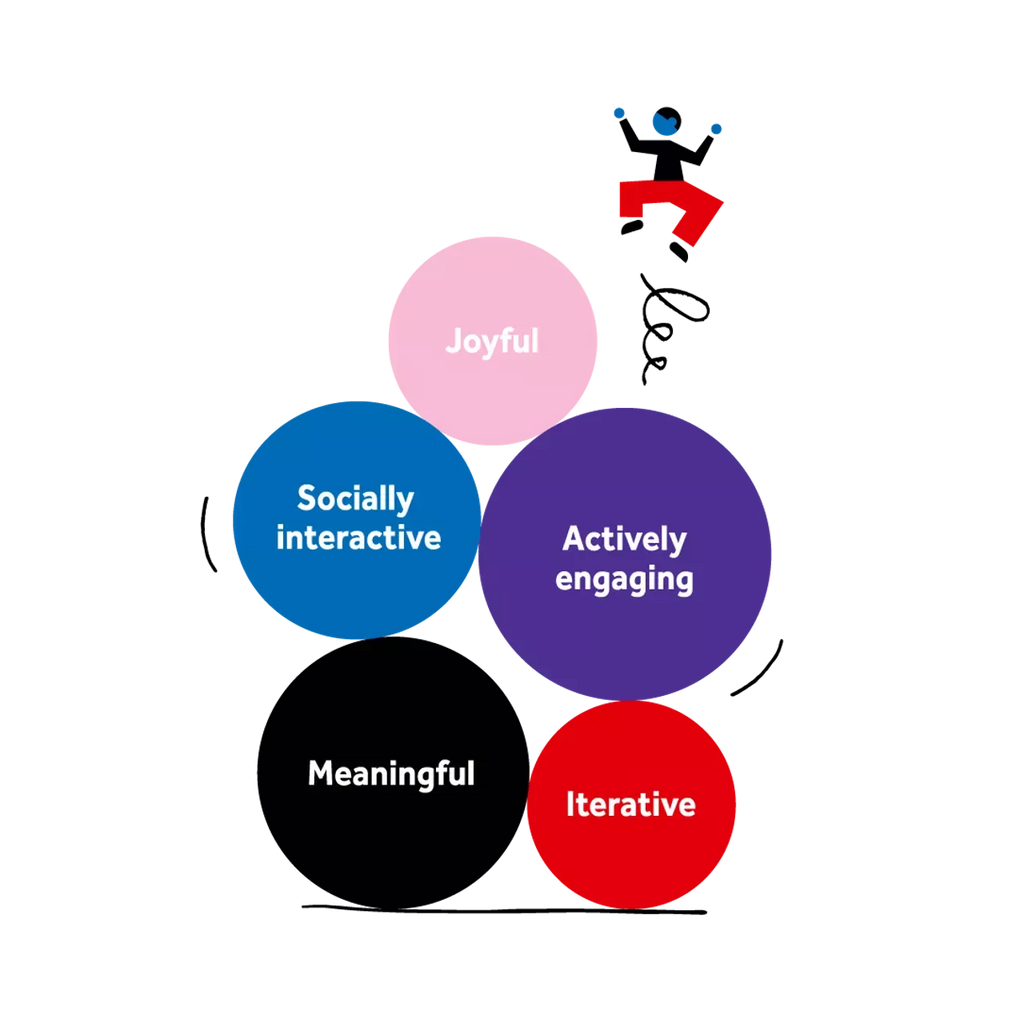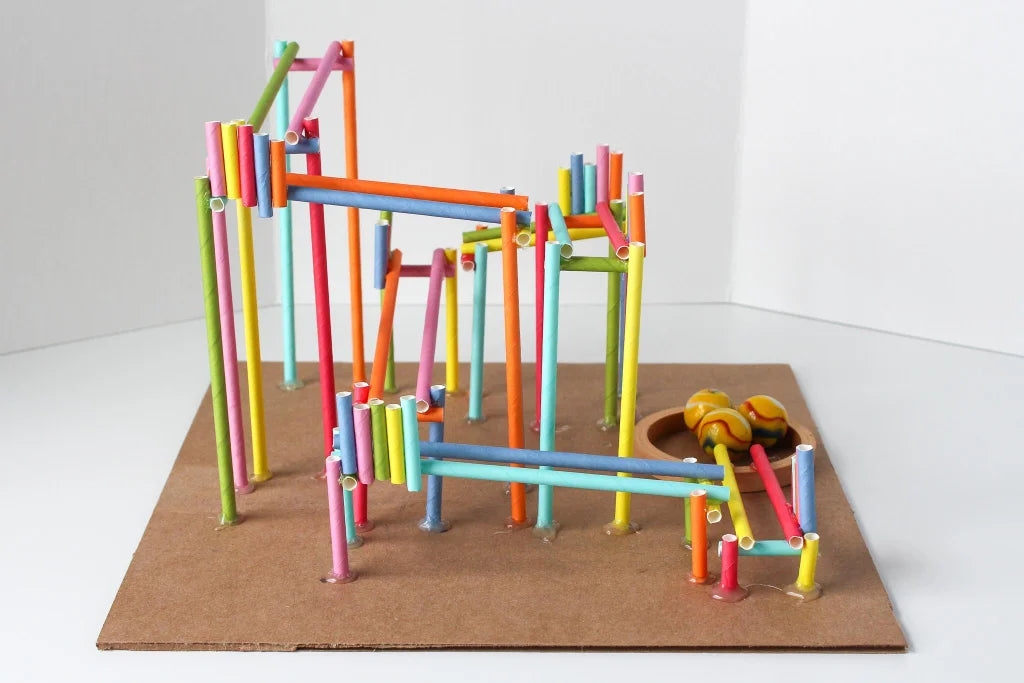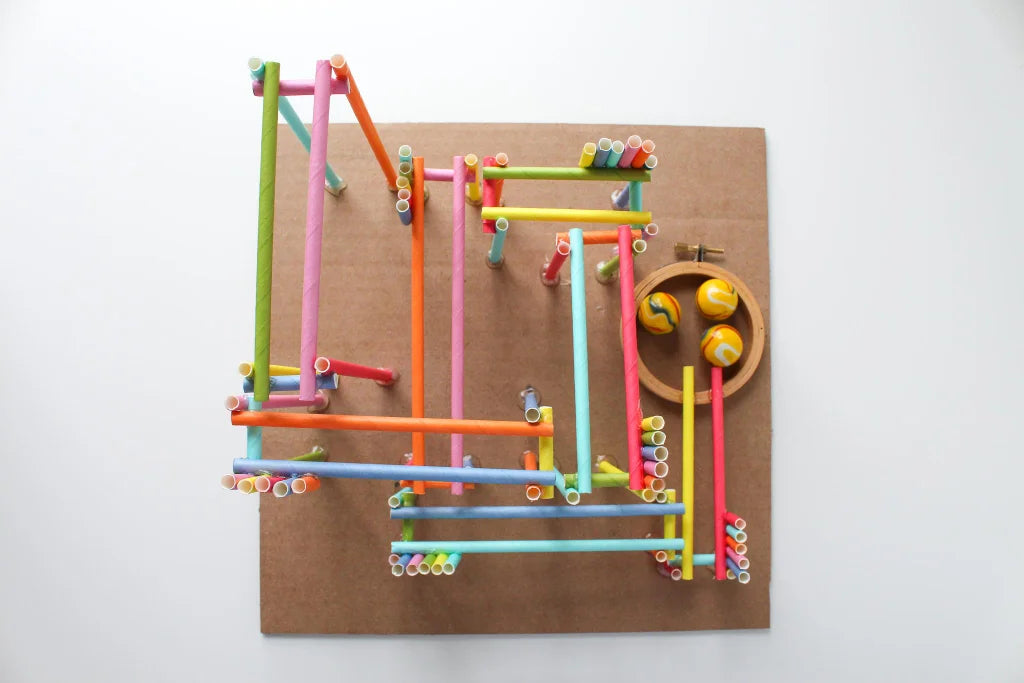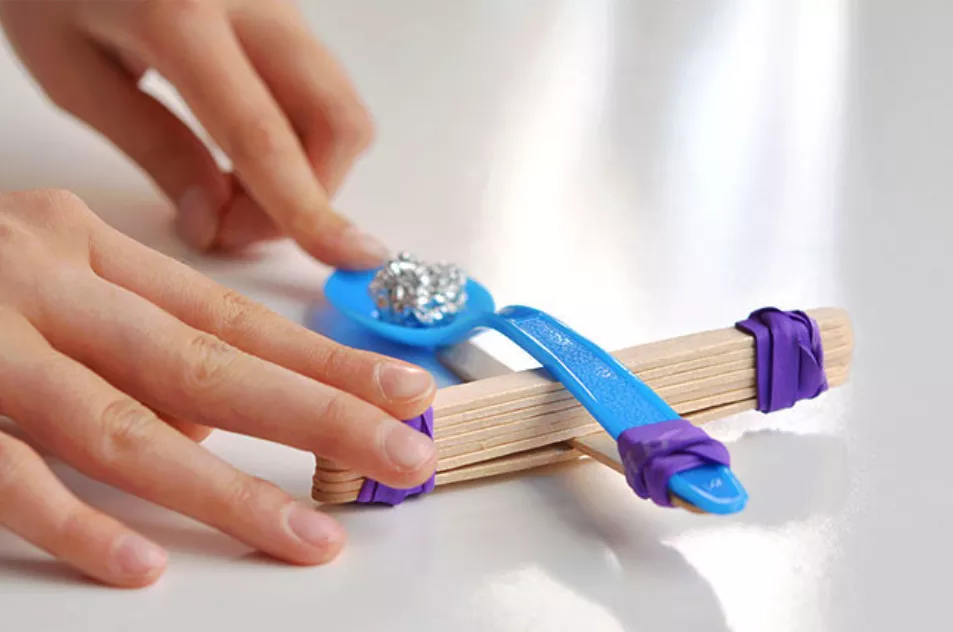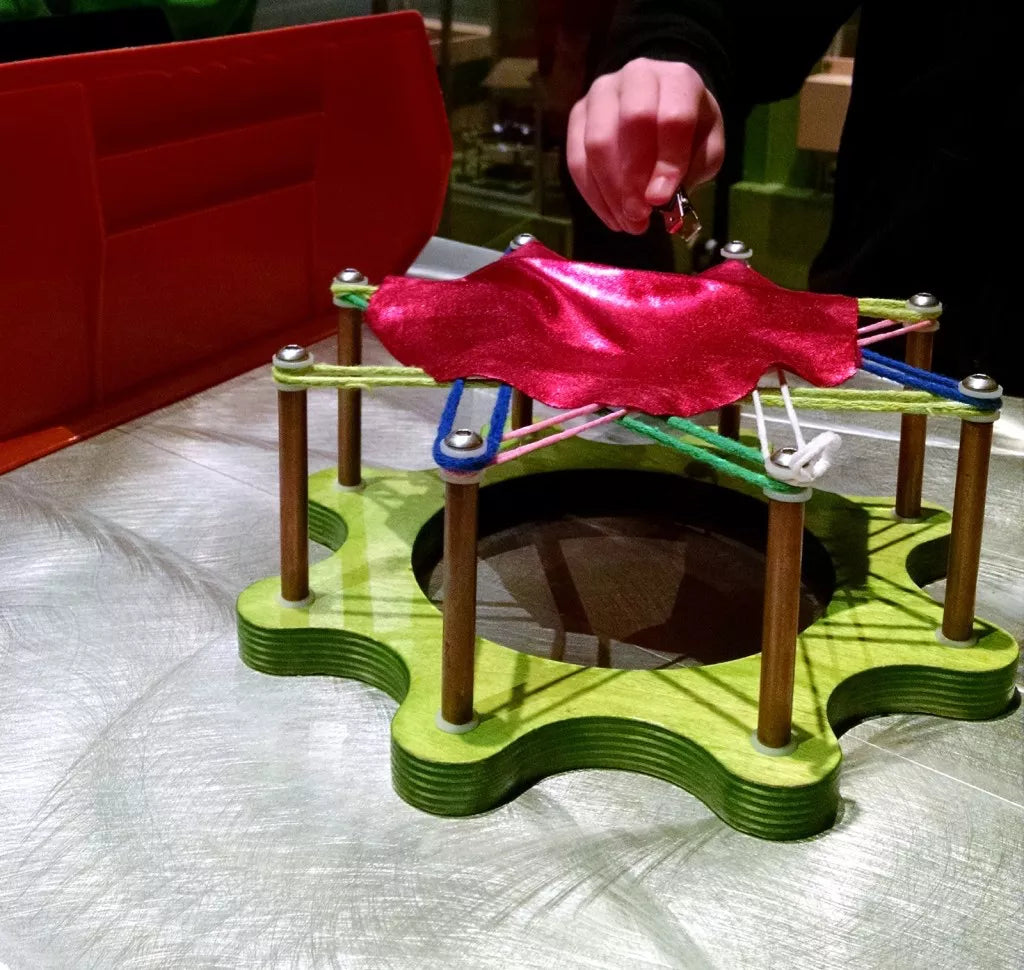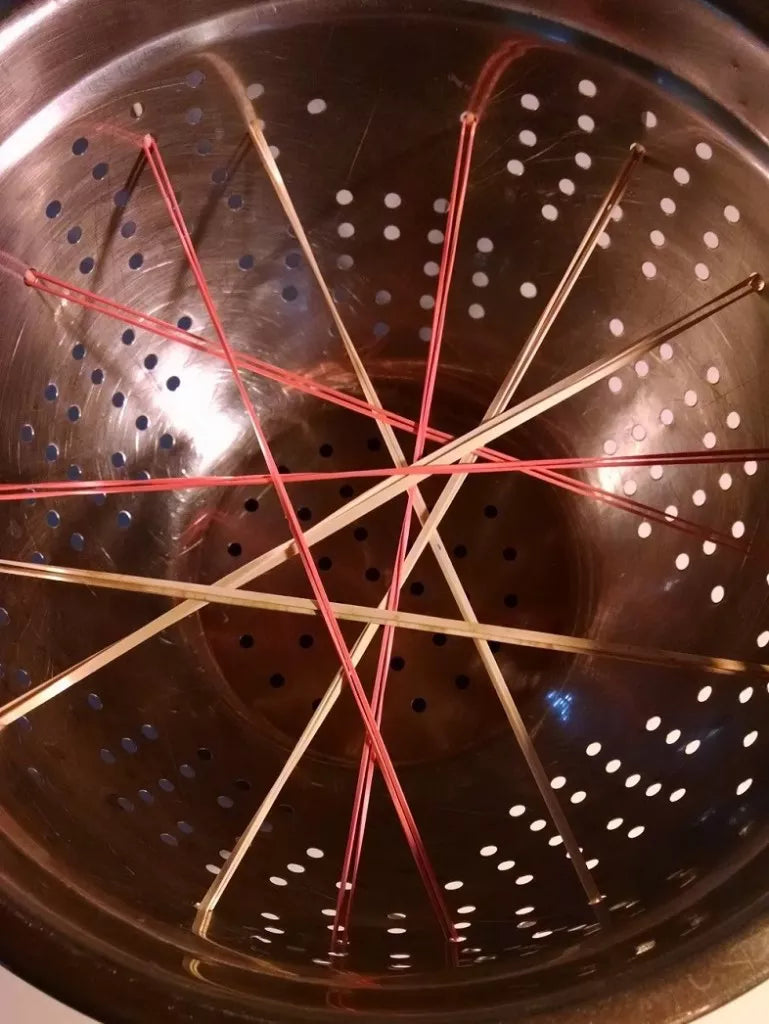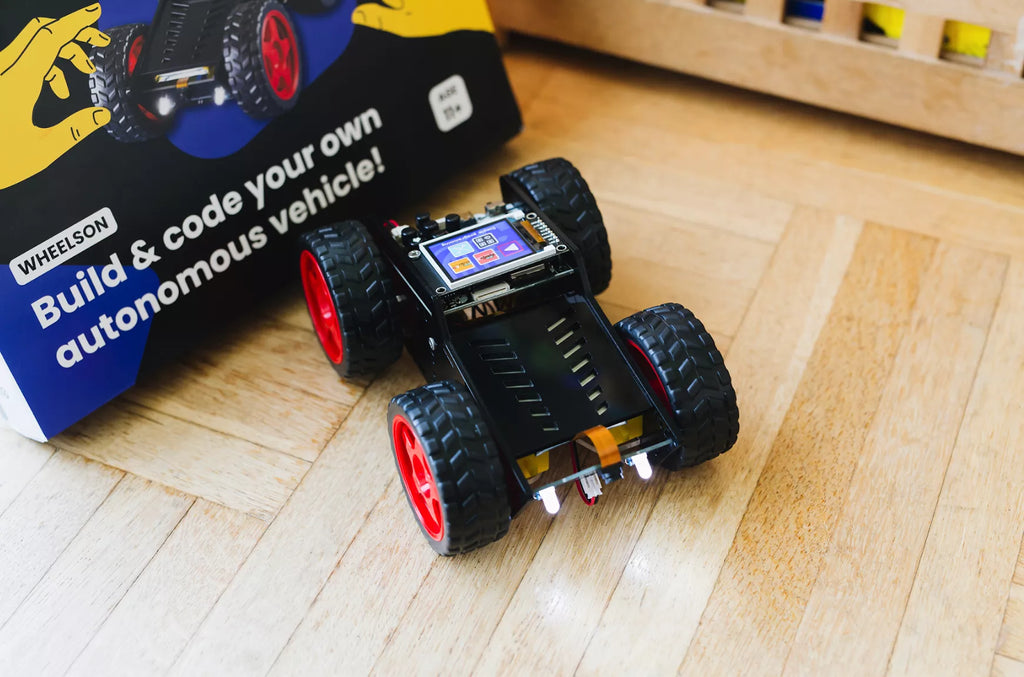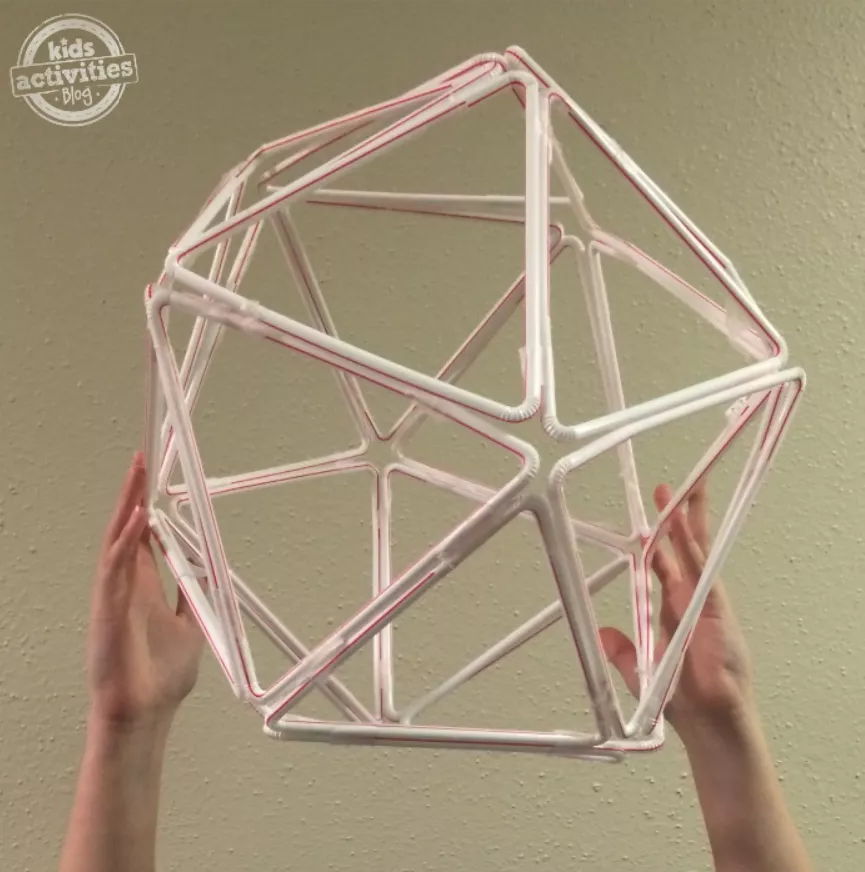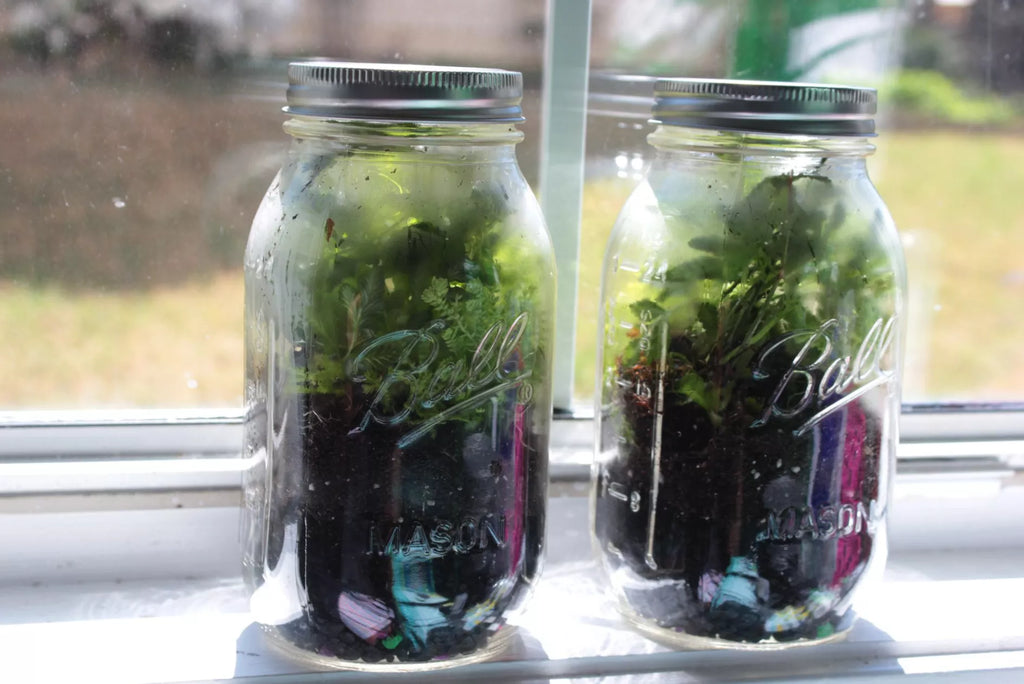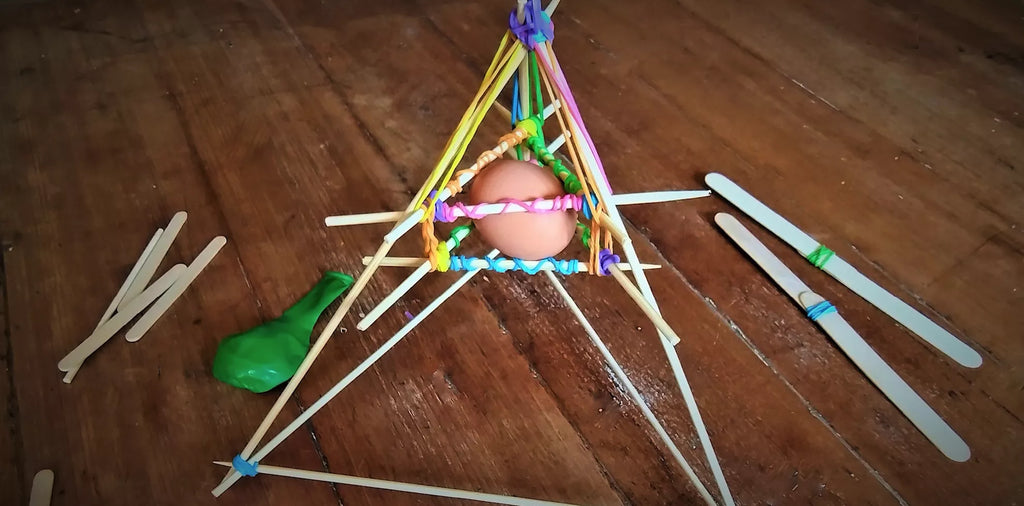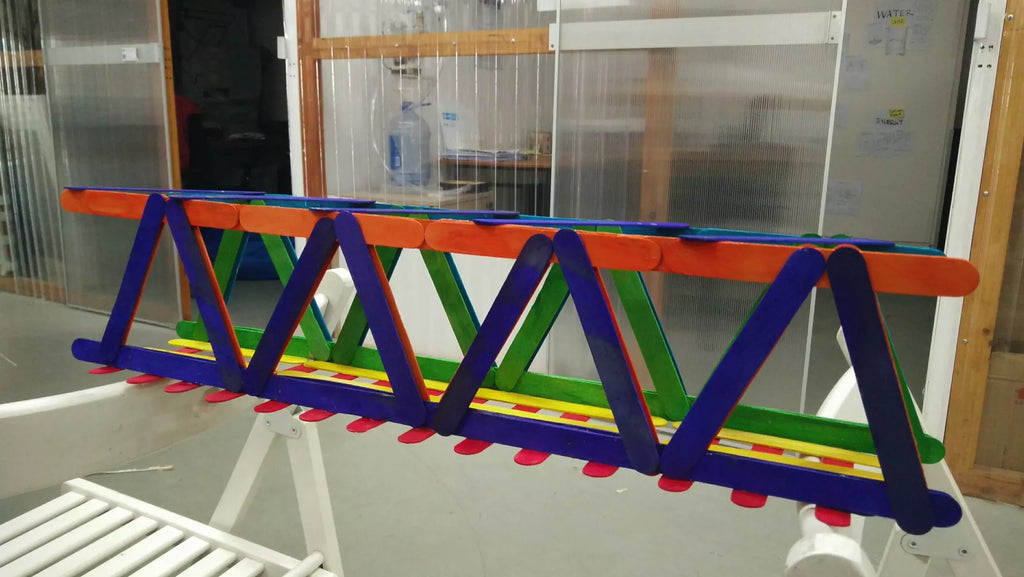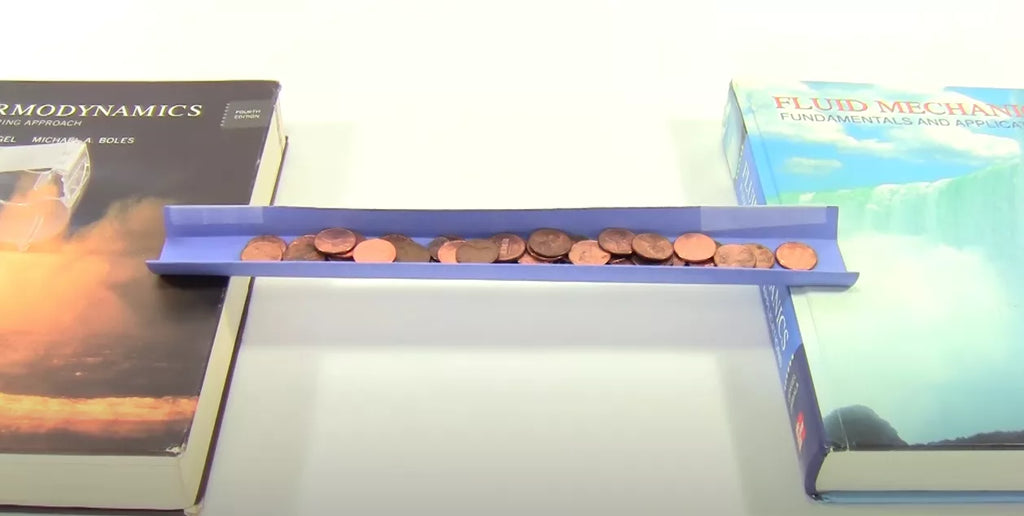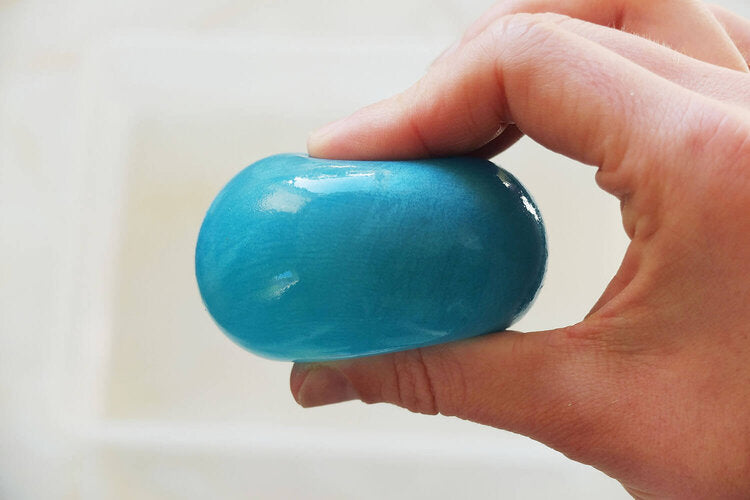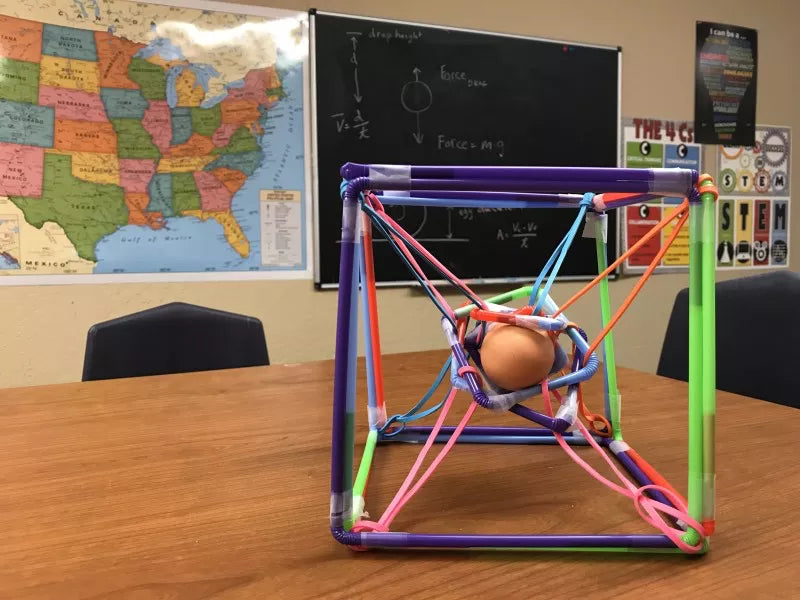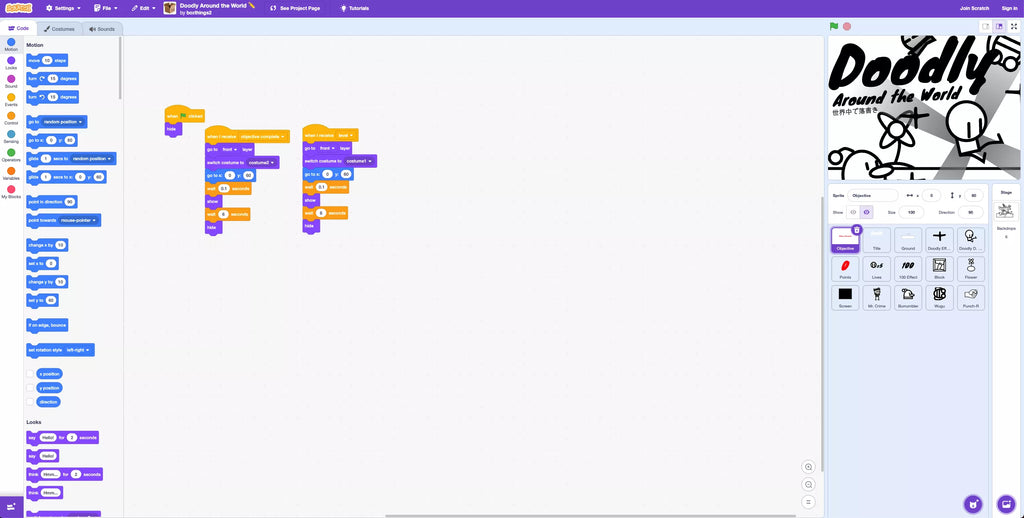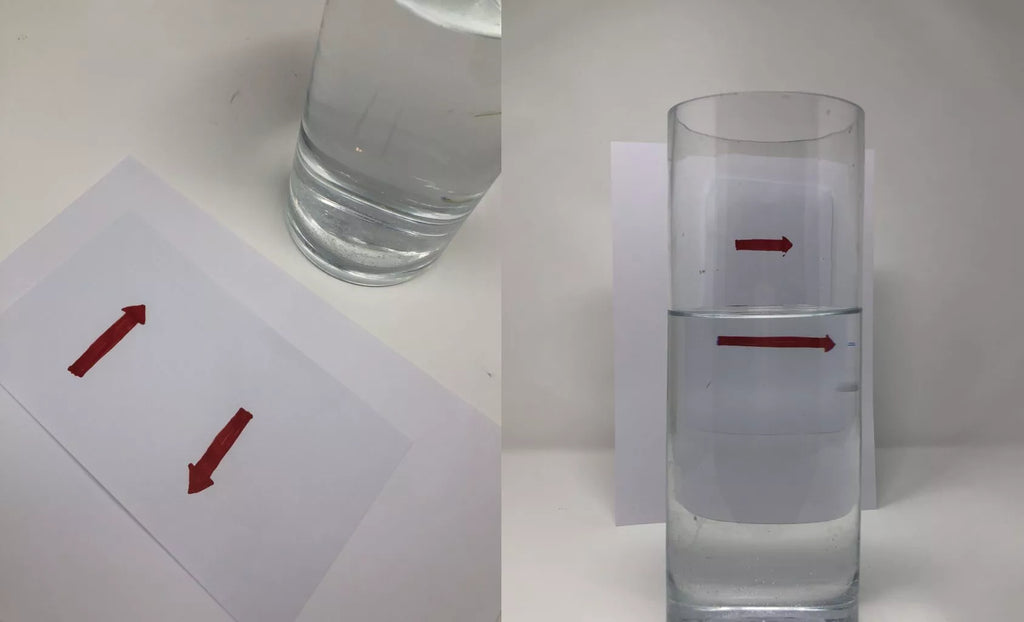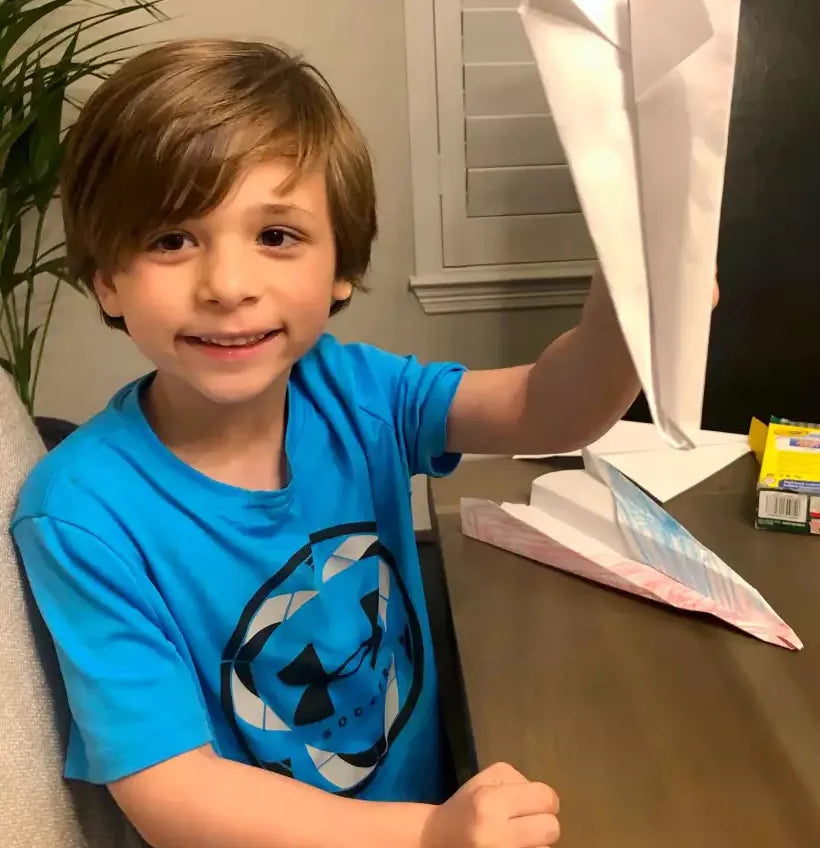If you’re looking for fun and educational ways to keep your little ones engaged, you’re in the right place.
This article will show you all the best STEM activities for kindergarten — how to do them, where, when, and why. The full package.
And almost all these activities can be done with basic supplies found around the house.
STEM (Science, Technology, Engineering, and Math) activities are a fantastic way to spark curiosity and creativity in young minds. Whether you’re a parent eager to inspire your child at home or a teacher on the hunt for exciting classroom ideas, we’ve got you covered.
Let’s dive into these awesome kindergarten STEM activities that make learning an adventure!
Why STEM activities are crucial for kindergarteners?
STEM activities are more than just fun and games—they’re vital for your kindergartener’s growth and future success!
Engaging in these hands-on projects helps kids think critically, solve problems, develop engineering skills, and unleash their creativity. By introducing STEM early, you’re setting up your child with the skills and confidence to tackle more complex subjects down the road.
Plus, it makes learning an exciting adventure! These activities also introduce the scientific method, helping kids plan, test, and draw conclusions based on evidence and observations.
Here’s why these activities are so crucial for young kids and how they can benefit your child both now and in the future.
Developing critical thinking and problem-solving skills
STEM activities, such as a STEM challenge, are a fantastic way to help your kindergartener develop critical thinking and problem-solving skills. A great stem idea involves hands-on and engaging activities focused on science, technology, engineering, and mathematics, such as exploring volume, shapes, and measurement through interactive experiences.
When kids engage in hands-on projects, they learn to ask questions, explore different possibilities, and think through solutions.
For instance, building a structure with blocks or solving a simple coding puzzle requires them to plan, test, and adjust their approach.
These activities encourage kids to analyze situations, make decisions, and learn from their mistakes, laying the groundwork for strong problem-solving abilities they’ll use throughout their lives.

Encouraging creativity and innovation
STEM activities are like a playground for creativity and innovation.
When kids tackle projects like designing a marble run, building a straw bridge, or constructing towers and houses, they really get to flex their imaginative muscles. Using everyday objects to build structures like towers, bridges, and houses further enhances their creativity and fine motor skills.
These activities encourage brainstorming, experimenting, and discovering new ways to solve problems. It’s not just about finding the “right” answer but exploring multiple solutions and enjoying the process of creating.
This kind of innovative thinking nurtures a love for learning and a willingness to try new things, setting kids up for lifelong success.

Building a strong foundation for future learning
Getting kids into STEM early sets them up with a solid foundation for their education. When they dive into STEM activities, they get comfy with scientific and math concepts, making these subjects less daunting as they grow.
Early exposure to things like measurement, patterns, and basic engineering gives them the tools they need to tackle more complex topics later on. This foundation supports academic success and sparks a lifelong curiosity and enthusiasm for learning.

Top 10 easy STEM activities for kindergarten
STEM activities for kindergarteners should be simple, fun, and educational. Each kindergarten STEM challenge is designed to be simple, fun, and educational.
Here are ten activities that fit the bill perfectly:
Simple science experiments
Science experiments, such as a classic science experiment, are a great way to introduce young kids to the wonders of the natural world.
Here are three simple yet fascinating experiments that will captivate kindergarten kids:
Oil and water experiment
Explore the concept of liquid density with this easy experiment.
This experiment is visually engaging and simple to set up, making it perfect for young children. It introduces basic scientific concepts like density and immiscibility, sparking curiosity and encouraging observation skills.

Materials needed:
-
Clear glass or jar
-
Water
-
Cooking oil (vegetable or olive oil)
-
Food coloring (optional)
-
Spoon
How to perform the experiment:
-
Fill the glass halfway with water.
-
Add a few drops of food coloring and stir.
-
Pour an equal amount of oil into the glass.
-
Observe as the oil floats on top of the water.
-
For added fun, stir the mixture and watch how the liquids separate again.
Oobleck creation
Create a non-Newtonian fluid using just cornstarch and water. Mix the two ingredients together until they form a goopy substance that acts like both a solid and a liquid. This experiment is a fun way to explore states of matter and get hands-on with science. Kids will enjoy squeezing and playing with the Oobleck, learning about its unique properties along the way.
Materials needed:
-
Cornstarch
-
Water
-
Mixing bowl
-
Food coloring (optional)
How to perform the experiment:
-
Pour 1 cup of cornstarch into the mixing bowl.
-
Slowly add water, mixing until you achieve a gooey consistency.
-
Add a few drops of food coloring for extra fun.
-
Let kids play with the Oobleck, observing how it behaves like both a solid and a liquid.
Seed germination observation
This experiment provides a hands-on way to learn about plant biology and growth cycles. It’s simple, requires minimal materials, and offers daily excitement as children watch their seeds grow.

Materials needed:
-
Clear plastic bag
-
Paper towel
-
Water
-
Seeds (e.g., beans or peas)
-
Tape
How to perform the experiment:
-
Dampen the paper towel and fold it to fit inside the plastic bag.
-
Place the seeds on one side of the paper towel.
-
Seal the bag and tape it to a sunny window.
-
Observe the seeds daily, noting the changes as they sprout.
Engaging technology projects
Technology projects can be both fun and educational for kindergarteners. Here are two engaging kindergarten STEM activities that introduce basic coding concepts in a playful and interactive way:
Basic coding with CircuitMess STEM Box
The CircuitMess STEM Box offers a hands-on introduction to coding and electronics, designed for young learners.
Each box contains everything needed to build exciting projects, with easy-to-follow instructions and online tutorials that make technology fun and accessible.

Materials needed:
-
CircuitMess STEM Box
-
Instruction manual
-
Computer or tablet (for coding)
How to perform the activity:
-
Open the CircuitMess STEM Box and explore the components.
-
Follow the step-by-step instructions in the manual to assemble the project.
-
Connect the project to a computer or tablet and use the included software to program it.
-
Experiment with different coding commands to see how they affect the project.
The CircuitMess STEM Box combines play with learning, helping kids develop critical tech skills in an engaging and hands-on way.
It's available now at 20% off—just use the code STEM20 at checkout, and you'll receive your STEM Box in less than a week!
LEGO coding activities
LEGO coding activities are a fantastic way to introduce young children to programming basics. Kids learn about sequences, problem-solving, and logical thinking, all while having fun with LEGO bricks.
Our go-to LEGO set for teaching kids to code is, without a doubt, the LEGO® Education BricQ Motion Prime Set.

Image source: LEGO
With more than 560 pieces in the set, kids will have a blast playing with it for days!
For this LEGO coding adventure, you'll need the LEGO set and the instructions and lesson plans that come included.
Kids will get to create various models that demonstrate difference principles of motion; explore concepts like push, pull, friction, and balance; and experiment with different model designs!
All in all, it's a great set that combines the physical science concepts with creative play. Hands down, the best way to grasp the STEM fundamentals — by playing!
Fun engineering challenges
Engineering challenges are a great way to engage kindergarteners in hands-on learning and develop their engineering skills. Here are three fun activities that encourage creativity, problem-solving, and critical thinking.
These activities are perfect examples of a STEM idea, focusing on science, technology, engineering, and mathematics through interactive experiences.
Cup tower challenge
The cup tower challenge is a blast! It gets kids thinking creatively, experimenting with designs, and learning about balance and stability. Plus, it's super fun!

Materials needed:
-
100 plastic cups
How to perform the activity:
-
Give the kids 100 plastic cups.
-
Challenge them to build the tallest tower possible using only the cups.
-
Encourage them to try different structures and designs.
-
Talk about which designs were the most stable and why.
It's a simple yet exciting way to spark creativity and problem-solving!
Egg drop project
The egg drop project is a fun way to teach basic engineering skills and introduce innovative thinking. Kids learn about impact resistance and cushioning through trial and error, making it super educational and engaging.

Materials needed:
-
Eggs
-
Various materials (e.g., straws, tape, cotton balls, cardboard)
How to perform the activity:
-
Give each child an egg and a variety of materials.
-
Challenge them to design a structure that will protect the egg when dropped from a height.
-
Test the designs by dropping the eggs.
-
Discuss which designs worked best and why.
It’s a great way to spark creativity and problem-solving skills!
Popsicle stick catapult
Building a popsicle stick catapult is an awesome way to teach kids about basic physics like force and motion. Plus, it boosts their fine motor skills and creativity as they design and test their own catapults.
Materials needed:
-
Popsicle sticks
-
Rubber bands
-
Plastic spoon
-
Small objects (like marshmallows or pom-poms)
How to perform the activity:
-
Stack 6-8 popsicle sticks and secure them with rubber bands at both ends.
-
Bind two more sticks at one end with a rubber band.
-
Insert the stack between the bound sticks to form a "T" shape.
-
Attach the plastic spoon to the top stick with a rubber band.
-
Launch small objects and measure the distance traveled.
It's a fun and hands-on way to explore physics!.
Math-centered activities
Math can be both fun and educational when presented through engaging, hands-on STEM ideas.
Here are three great ways to teach kindergarteners essential math skills:
Apple fractions
Teaching fractions with apples makes math easy and fun. This hands-on approach helps kids see how fractions fit together to make a whole.

Materials needed:
-
Apples
-
Knife (for adult use)
-
Plates
How to perform the activity:
-
Slice apples into halves, quarters, and eighths.
-
Show the kids each piece and explain the fractions.
-
Let the kids put the apple pieces back together to form whole apples.
-
Talk about how the pieces make up the whole.
It's a tasty and visual way to grasp the concept of fractions!
Shape stamping
Shape stamping is a fun way to mix art and geometry, making learning about shapes interactive and enjoyable.
It helps kids recognize and differentiate between different geometric shapes while also building their fine motor skills.

Materials needed:
-
Sponges or foam sheets
-
Scissors
-
Washable paint
-
Paper
How to perform the activity:
-
Cut sponges or foam sheets into various shapes (circles, squares, triangles, etc.).
-
Dip the shapes into washable paint.
-
Stamp the shapes onto paper to create patterns and pictures.
-
Talk about the names and properties of the shapes.
It's a creative and engaging way to learn geometry!
LEGO math challenges
LEGO math challenges make learning math super fun and interactive.
By mixing math problems with LEGO play, kids can visualize and solve problems in a hands-on way, boosting their counting, pattern recognition, and basic arithmetic skills.

Materials needed:
-
LEGO bricks
-
Printable math challenge cards (you can find these online)
How to perform the activity:
-
Print out or create your own math challenge cards.
-
Set up various math challenges using LEGO bricks, like building towers to represent different numbers or creating patterns.
-
Use the challenge cards to guide the activities, prompting kids to solve math problems by manipulating the LEGO bricks.
-
Encourage kids to explore different solutions and have fun while learning.
For more detailed instructions and to get your printable math challenge cards, check out LEGO Math Challenge Cards.
Seasonal STEM activities for kindergarten
Seasonal STEM activities are such a fun way to keep learning fun and relevant all year round. They offer a fantastic way to explore the changing world around us.
Here are some exciting spring activities that will help kids dive into nature and science:
Spring STEM activities for kids
As spring rolls in with blooming flowers and changing weather, it's the perfect time for hands-on projects that explore nature's wonders. These activities will captivate kids' curiosity and make learning a joyful experience.
Seed planting and growth tracking
Planting seeds and tracking their growth is a hands-on way to teach kids about plant biology and life cycles. It also helps kids learn responsibility and improves their observation skills.
Materials needed:
-
Seeds (e.g., beans, peas)
-
Soil
-
Small pots or cups
-
Water
-
Ruler
-
Journal or chart for tracking
How to perform the activity:
-
Fill the pots with soil and plant the seeds.
-
Place the pots in a sunny spot and water them regularly.
-
Have the kids measure and record the plants' growth in a journal or chart.
-
Discuss the stages of plant growth and what plants need to thrive.
It's a fun and educational way to get kids excited about nature and science!
Weather observations
Weather observations help children understand meteorology and the concept of daily and seasonal changes. It encourages them to make regular observations and recognize patterns, fostering a curiosity about the natural world.
Materials needed:
-
Thermometer
-
Weather journal or chart
-
Crayons or markers
-
Access to a window or outdoor area
How to perform the activity:
-
Check the weather each day using a thermometer and by observing the sky.
-
Record the temperature, cloud cover, precipitation, and wind in a weather journal or chart.
-
Use crayons or markers to draw what the weather looks like each day.
-
Discuss patterns and changes in the weather over time.
Summer STEM activities for kids
Summer is the perfect time to get outside and dive into fun STEM activities. The warm weather and nature provide endless opportunities for exploration and learning.
Here are two exciting activities that are great for summer:
DIY solar ovens
Building a DIY solar oven is a fantastic way to introduce kids to solar energy and heat absorption. It's hands-on, educational, and ends with a tasty treat!

Materials needed:
-
Cardboard box (pizza box works great)
-
Aluminum foil
-
Plastic wrap
-
Black construction paper
-
Tape
-
Thermometer (optional)
-
S'mores ingredients (graham crackers, chocolate, marshmallows)
How to perform the activity:
-
Line the inside of the box with aluminum foil (shiny side out).
-
Place black construction paper at the bottom to absorb heat.
-
Make a flap in the lid and cover it with plastic wrap to trap heat.
-
Put the s'mores ingredients inside the box.
-
Angle the flap to reflect sunlight and leave the box in direct sunlight.
-
Use a thermometer to track the temperature inside (optional) and wait for the s'mores to melt.
It's a delicious way to learn about solar energy!
Water science experiments
Water science experiments are super engaging and easy to do with everyday materials.
They teach kids about buoyancy, the water cycle, and the effects of salt on ice, encouraging observation and critical thinking.

Materials needed:
-
Various containers (cups, bowls, bottles)
-
Food coloring
-
Ice
-
Salt
-
Water
-
Measuring spoons
-
Paper and pen for observations
How to perform the activity:
-
Fill containers with water and add different food coloring.
-
Experiment with ice and salt to see how salt lowers the freezing point of water.
-
Create a simple water cycle by heating water and observing condensation.
-
Test buoyancy by placing various objects in water to see if they sink or float.
-
Record observations and discuss the results.
These activities make learning about water fun and interactive!
Fall STEM activities for kids
Fall is full of vibrant colors and fascinating changes in nature, making it perfect for STEM fun.
Here are two exciting projects that young learners will love:
Leaf chromatography
Leaf chromatography is a fun, hands-on way to explore the colors in leaves. It teaches kids about pigments and chromatography in a visually engaging way.

Materials needed:
-
Fresh leaves (variety of colors)
-
Coffee filters or chromatography paper
-
Rubbing alcohol
-
Glass jars
-
Pencils
-
Tape
How to perform the activity:
-
Tear the leaves into small pieces and place them in a jar.
-
Add rubbing alcohol to cover the leaf pieces.
-
Cover the jar and let it sit until the alcohol is colored by the leaf pigments.
-
Cut a strip of coffee filter or chromatography paper and tape it to a pencil.
-
Place the pencil over the jar so the paper strip hangs into the alcohol.
-
Watch as the colors travel up the paper, separating into different pigments.
It's a cool way to see the hidden colors in leaves!
Pumpkin eruption experiments
Pumpkin eruptions are a super fun and festive way to show kids chemical reactions. It's easy to set up, visually exciting, and a great way to talk about basic chemistry concepts like acids and bases.

Materials needed:
-
Small pumpkins
-
Baking soda
-
Vinegar
-
Food coloring (optional)
-
Dish soap (optional)
-
Spoon
How to perform the activity:
-
Cut the top off the pumpkin and scoop out the seeds and pulp.
-
Add a few spoonfuls of baking soda to the hollowed pumpkin.
-
Optional: Add food coloring and a squirt of dish soap for extra fun.
-
Pour vinegar into the pumpkin and watch it erupt!
-
Try different amounts of baking soda and vinegar to see how the reactions change.
It's a cool way to mix science with some fall fun!
Winter STEM activities for kids
Winter is a great time to explore the wonders of ice and snow through fun STEM activities.
Here are two exciting projects that will captivate young learners:
Frost and ice experiments
These frost and ice experiments are a fun way to learn about freezing points and how frost forms. It's simple to set up, visually captivating, and gets kids talking about the properties of ice and salt.

Materials needed:
-
Glass jar
-
Ice
-
Salt
-
Water
-
Spoon
-
String
-
Small objects (e.g., paper clips)
How to perform the activity:
-
Fill the glass jar with ice and a bit of water.
-
Sprinkle salt over the ice and stir.
-
Attach a small object to a piece of string.
-
Dangle the string into the jar, touching the ice.
-
Watch as frost forms around the string and object because of the salt's effect on the freezing point.
It's a cool way to explore the science behind frost!
Snowflake symmetry activities
Making paper snowflakes is a fun and creative way to teach kids about symmetry and geometry. It boosts fine motor skills, sparks creativity, and shows how math concepts appear in nature.

Materials needed:
-
Paper
-
Scissors
-
Markers or crayons
-
Printable snowflake templates (optional)
How to perform the activity:
-
Fold a piece of paper into a triangle.
-
Cut small shapes along the edges of the folded paper.
-
Unfold the paper to reveal a symmetrical snowflake.
-
Optional: Use markers or crayons to decorate the snowflake.
-
Discuss how each snowflake is unique yet symmetrical.
It's a fun, hands-on way to explore symmetry!
How to implement STEM projects at home
Bringing STEM projects into your home can be easy and loads of fun. Here’s how to get started.
Use everyday household items
You don’t need fancy supplies to dive into STEM. Everyday items like plastic cups, straws, paper, and kitchen ingredients work wonders.
Build towers with cups, make oobleck with cornstarch and water, or explore frost with ice and salt. The possibilities are endless!
Incorporate nature and outdoor play
Turn your backyard into a STEM lab! Plant seeds and track their growth, build boats with leaves and sticks, or play with water to learn physics. Observe the weather, collect leaves for chromatography, and explore nature’s endless STEM possibilities.
Tips for teachers and parents
Engaging kids with STEM activities is super rewarding and a lot of fun.
Whether you're a teacher inspiring your students or a parent sparking curiosity at home, these tips will help you create an exciting learning environment.
Create a STEM-friendly environment
Create a cool STEM space!
Gather fun materials like paper, markers, building blocks, and everyday items.
Keep it organized and easy to reach so kids feel free to explore and create. Add some STEM books and posters for extra inspiration. Make it inviting and exciting, a place where curiosity thrives.
Encourage curiosity and exploration
Let’s get curious! Encourage kids to ask lots of questions and think like little scientists.
Use open-ended questions to spark their imagination and let them lead the way. Hands-on experiments are great — don’t worry about messes. They’re part of the fun!
Celebrate their discoveries, big or small, and cheer them on to keep exploring.
Adapt activities for different skill levels
Every kid is unique, and so are their learning paces. For the littles, keep tasks simple and guide them gently. For older kids or those ready for a challenge, up the complexity.
The goal is to keep everyone engaged and learning at their own speed, making sure each child feels accomplished and excited about STEM.

Supercharge your kids' STEM learning with CircuitMess
We’ve covered the importance of STEM activities and shared some fantastic, easy-to-do projects to get your kids excited about learning. From science experiments to engineering challenges, these activities are designed to spark curiosity and foster a love for exploration.
Remember, encouraging STEM learning at a young age builds critical thinking, creativity, and problem-solving skills that will benefit your child throughout their life. Keep nurturing their curiosity, and watch them grow into enthusiastic learners.
To take your child’s STEM education even further, consider using CircuitMess DIY kits. These kits offer hands-on projects that introduce kids to electronics, coding, and engineering in a fun, engaging way. Perfect for all skill levels, CircuitMess kits make complex concepts accessible and enjoyable.
Start your child’s journey into the world of STEM today with CircuitMess and inspire the next generation of innovators!
]]>
























